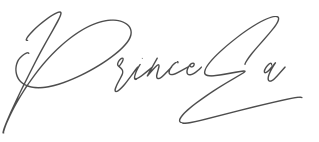Around 800,000 Years Ago, Something Took Out 99% of All Human Life

Roughly 800,000 years ago, almost every human ancestor vanished. Genetic research now suggests that an event during this period wiped out about 99% of the population, leaving only a few thousand individuals alive. The survivors held on for more than 100,000 years, navigating a harsh environment that threatened to erase humanity before it truly began.
Scientists believe this dramatic decline in numbers could explain major gaps in the fossil record and may have shaped how humans evolved afterward. A study published in Science introduced this possibility by using a new method to trace ancient population changes through modern human DNA.
Evidence of a Severe Human Population Drop

Genetic research now points to one of the most dramatic events in our evolutionary past—a near-total collapse in human ancestor populations. Using advanced analysis of genomes from over 3,000 people, scientists discovered that our ancestors once dropped to an estimated 1,280 breeding individuals. That number didn’t just dip briefly—it stayed that way for roughly 120,000 years.
The finding didn’t come from fossils. Instead, researchers read the signal of this collapse in our DNA. Every person alive today carries genetic traces passed down from ancient ancestors. When scientists track how these gene variants converge across generations, they can estimate population sizes deep in the past.
In this case, the numbers don’t just show a dip—they show a sharp, prolonged collapse that likely reshaped the future of humankind. For comparison, that population size is smaller than that of many endangered species today. The fact that humanity continued at all from such a small group is, in itself, extraordinary.
What makes this event even more striking is its timing. It happened long before Homo sapiens emerged, during a period when multiple human ancestor species were alive. That raises bigger questions—who exactly were those survivors, and how did they manage to pull through?
How Researchers Discovered the Event

A major breakthrough came from a tool called FitCoal, short for fast infinitesimal time coalescent process. This method doesn’t look at ancient bones or artifacts. Instead, it uses modern human DNA to calculate how populations changed over hundreds of thousands of years.
The team behind FitCoal studied the genomes of 3,154 individuals from a wide range of populations. They focused on how sections of DNA trace back to common ancestors. When populations are large, these ancestral lines stretch further back. When populations are small, those lines merge much faster. By modeling these patterns in extreme detail, FitCoal picked up signs of an ancient collapse.
Researchers didn’t rely on one data set or a single group of people. They ran multiple simulations, tested different genetic markers, and repeated their calculations across several population groups—both inside and outside of Africa. In every case, the signal was consistent: around 930,000 years ago, something reduced our ancestral population to a small, fragile group.
What sets FitCoal apart is how far back it can reach. Earlier methods could detect bottlenecks from tens of thousands of years ago. FitCoal pushed that window hundreds of thousands of years further. That gave scientists a new look at a period of human history that’s mostly missing from the fossil record.
Possible Causes of This Massive Decline

Around 930,000 years ago, Earth’s climate changed in ways that made life much harder to sustain. Cold periods became longer and more intense. Rainfall patterns shifted, and vast regions that once supported early humans turned dry and barren. This environmental upheaval likely cut off key food sources and forced small human groups into survival mode.
Glaciation events may have lowered global temperatures enough to shrink habitable areas. Species that humans relied on—both plant and animal—either moved, declined, or disappeared. With fewer resources and more competition, already-scattered populations may have struggled to migrate or adapt quickly enough.
Some scientists believe this period also lines up with a noticeable drop in fossil evidence across Africa and Eurasia. That gap could reflect a genuine drop in human activity, not just a missing record. If so, it suggests that early humans weren’t just surviving under stress—they were vanishing in large numbers.
The small group that survived may have benefited from cooperation, innovation, or sheer geographic luck. They could have found refuge in isolated areas with more stable conditions. Over time, their descendants would go on to shape the future of human evolution.
Why This Event Matters to Human Evolution

A population crash that extreme doesn’t just reduce numbers—it reshapes what comes next. With only about 1,280 breeding individuals left, genetic diversity would have narrowed sharply. That kind of genetic squeeze can speed up changes within a species, especially if those changes help with survival in a difficult environment.
Researchers believe this period may have marked a turning point in human evolution. Around the same time, a major shift occurred in our DNA: two ancestral chromosomes fused to form what is now known as chromosome 2. Unlike chimpanzees and gorillas, which still have 48 chromosomes, modern humans have 46. That fusion may have limited interbreeding with other hominin groups, setting the stage for new species to emerge.
The timing also overlaps with the possible appearance of Homo heidelbergensis, a human ancestor that some believe gave rise to modern humans, Neanderthals, and Denisovans. If the population bottleneck played a role in that transition, it means the roots of our species—and our closest extinct relatives—may all trace back to the same small group of survivors.
Far from being a footnote in prehistory, this ancient collapse may have helped shape the genetic foundation of every human alive today.

Survival during the bottleneck likely depended on more than just luck. Small groups of early humans may have relied on closer cooperation, shared knowledge, and simple tools to stay alive. The ability to communicate, organize, and adapt to a changing environment would have offered a critical edge. Some researchers also point to the growing control of fire during this period—providing warmth, safer food, and protection in a hostile world. These adaptations, both behavioral and technological, may have helped this small population hold on until conditions improved. Over time, these strategies didn’t just preserve life—they shaped how future generations lived, learned, and evolved.
A Genetic Red Flag or a Misread Signal?
While the findings from the FitCoal analysis sparked global interest, they’ve also drawn careful criticism. Several researchers agree the study introduces an intriguing idea but stop short of accepting it as fact. The primary concern lies in whether the population collapse was as widespread and prolonged as the data suggests.
Some fossil sites in Africa and Eurasia show signs of human presence during the same period, which complicates the story. If early humans were nearly wiped out, how did these groups leave traces behind? One explanation is that the bottleneck may not have affected all populations equally. Some regions could have maintained small but stable communities while others vanished.
Other scientists question the method itself. While FitCoal is a powerful tool, it relies on assumptions that may not hold over such long time spans. Critics want to see the results confirmed through additional models and independent genetic analyses. There’s also a need for stronger links between the genetic evidence and physical proof—namely, fossils.
To move forward, researchers are calling for more detailed excavation work. Better dating of fossil sites could show whether human activity really paused during this window, or if the genetic signal reflects something more complex. If new discoveries line up with the timing of the proposed bottleneck, confidence in the theory will grow. If not, scientists will need to rethink how to interpret the genetic clues.
What’s clear is that this study has opened a new line of inquiry into a poorly understood chapter of our past. Whether the bottleneck theory holds or not, it’s already reshaping how scientists approach the early stages of human evolution.
How 1,280 Lives Shaped Millions

Around 800,000 years ago, humanity came dangerously close to disappearing. Only a small group of ancestors survived a collapse that erased nearly all others. Whether caused by climate, geography, or genetics, that bottleneck left a lasting mark on who we are today.
Scientists continue to debate the scale and impact of this event, but the evidence points to a turning point in human history. From that fragile foundation, our species—and others closely related to us—eventually emerged. The survivors didn’t just pass on their genes. They passed on the capacity to adapt, to innovate, and to rebuild.
The full story of what happened during those 120,000 years remains unfinished. But one thing is clear: modern humans are here because that small group made it through. What they faced, and how they endured it, may hold answers to some of the deepest questions about where we come from—and how close we came to never existing at all.
Featured Image Source: Pexels
Source:
- Hu, W., Hao, Z., Du, P., Di Vincenzo, F., Manzi, G., Cui, J., Fu, Y., Pan, Y., & Li, H. (2023). Genomic inference of a severe human bottleneck during the Early to Middle Pleistocene transition. Science, 381(6661), 979–984. https://doi.org/10.1126/science.abq7487
- Ashton, N., & Stringer, C. (2023). Did our ancestors nearly die out? Science, 381(6661), 947–948. https://doi.org/10.1126/science.adj9484
Loading...






